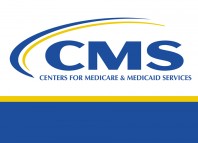Health Privacy Rule 42 CFR Part 2 Is Revised, Modernizing Care Coordination for SUD
The Substance Abuse and Mental Health Services Administration (SAMHSA), part of the U.S. Department of Health and Human Services (HHS or Department), announces the adoption of the revised Confidentiality of Substance Use Disorder Patient Records regulation, 42 CFR Part 2. The adoption of this revised rule represents a historic step in expanding care coordination and quality through the Deputy Secretary’s Regulatory Sprint to Coordinated Care.
“This reform will help make it easier for Americans to discuss substance use disorders with their doctors, seek treatment, and find the road to recovery,” said HHS Secretary Alex Azar. “President Trump has made the availability of treatment for Americans with substance use disorders, including opioid use disorder, a priority. Thanks to the valuable input of stakeholders, our final rule will make it easier for Americans to seek and receive treatment while lifting burdens on providers and maintaining important privacy protections.”
The new rule advances the integration of healthcare for individuals with substance use disorders while maintaining critical privacy and confidentiality protections. Under Part 2, a federally assisted substance use disorder program may only disclose patient identifying information with the individual’s written consent, as part of a court order, or under a few limited exceptions. Health care providers, with patients’ consent, will be able to more easily conduct such activities as quality improvement, claims management, patient safety, training, and program integrity efforts.
“Coordinated care is a vital piece of President Trump’s vision for a patient-centric healthcare system, and regulatory reform is a key step toward promoting more coordinated care,” said HHS Deputy Secretary Eric Hargan. “As part of our Regulatory Sprint to Coordinated Care, these changes are just the beginning of a comprehensive agenda for reforming regulations that govern the delivery and financing of American healthcare, with the ultimate goal of better care, and better health, at a lower cost.”
“The adoption of this rule means Americans will be better able to receive integrated and coordinated care in the treatment of their substance use disorders,” said HHS Assistant Secretary for Mental Health and Substance Use Elinore F. McCance-Katz, MD, PhD, the head of SAMHSA. “We are grateful to the individuals and organizations that contributed their input to the rule-making process. This is great news for our nation’s families and communities.”
“Modernizing 42 CFR Part 2 will strengthen the nation’s efforts to reduce opioid misuse and abuse and to support patients and their families confronting substance use disorders,” the Assistant Secretary said. “The rule will make it easier for primary care clinicians to treat individuals with substance use disorders.”
“We need an all-hands-on-deck approach to treating substance use disorders,” said McCance-Katz. “We must do all we can to ensure the greatest access and availability to care for individuals living with substance use disorders. Although well-intentioned, the non-disclosure of critical, lifesaving information the previous rule permitted is itself stigmatizing.”
The ease of sharing information, with patient consent, among providers will enable better, higher-quality care for those with substance use disorders. This serves as an important milestone in further aligning 42 CFR Part 2 and the Health Insurance Portability and Accountability Act of 1996 (or HIPAA) regulations.
To view a list of the changes in the final rule, please click here.









